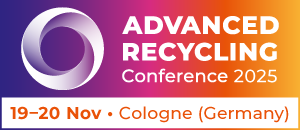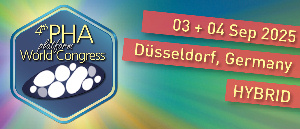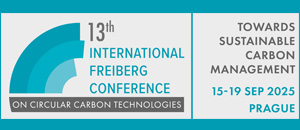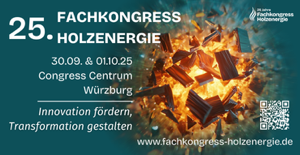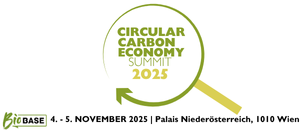The Marine Biotechnology ERA-NET (ERA-MBT) held the first stakeholder meeting in Lisbon, Portugal, on the 28th and 29th October, 2014. The mix of industry, funding agencies, policy makers/advisors and research delegates at the event provided contributions that will help to expand and shape development of European marine biotechnology. Feedback from the 100 participants highlighted a successful event, which provided feedback on opportunities for ERA-MBT to fill many gaps in stimulating marine biotechnology research and innovation. Lively discussions between prospective partners’ intent on bidding for a slice of the funds from the first call for research proposals were a feature of coffee breaks. Further stimulating discussions followed during a break-out session and an interactive round-table discussion during which participants shared their view on future directions for marine biotechnology.
Steinar Bergseth of the Research Council Norway, the coordinator of the ERA-MBT project, thanked all those involved in the workshop and in particular the local organiser Marta Norton and her team from the Foundation of Science and Technology. Steinar invited the stakeholders to actively participate in the debate and to contribute ideas on future ERA-MBT activities that would make marine biotechnology a significant driving force in shaping the future of Europe. He elaborated on the content of marine biotechnology and the biotech toolbox vs market drivers developing the field. Within the project’s ten months, major achievements have been made such as the launch of a first transnational call, the assembly of an international advisory group and the agreement on a vision.
Commission support for top-level research to continue under Junker
Jacques Fuchs, Deputy Head of Unit F4 – Marine Resources, DG Research and Innovation, European Commission, described the range of EC support actions that contribute to marine and maritime development, and how the Jean-Claude Junker led Commission, provides many new opportunities for marine biotechnology, since funding for top-level research not only creates jobs, but also ensures that technological progress gives a boost to the economy. In welcoming the successful launch of the ERA-MBT he emphasised the importance of the ERA-NET in contributing to unlocking the potential of the seas and oceans. Developing high value products from marine biomass, will contribute to building the European Bioeconomy. Marine biotechnology is an important theme within the Blue Growth strategy, and he hoped that the achievements of the ERA-MBT would be central to the further development of Horizon 2020. The next H2020 work programme (2016-17) will include new actions within the area.
Highlighting marine biotechnology research and innovation
In an enlightening presentation, Torger Børresen of Innovation Fund Denmark, the Danish ERA-MBT partner, highlighted the market penetration of products originating from the marine environment in areas such as biomaterials, food, pharmaceuticals, etc. He emphasised the market potential may be significantly expanded by developing a deeper understanding of the marine environment and the options to maximize the use of marine biomass.
Rachael Ritchie, Director, Business Development, Genome, British Columbia in Canada provided an international perspective on the state of the art of marine biotechnology. In a wide-ranging and stimulating talk, she covered all aspects of the marine biotechnology value chain from addressing the need for expanding the – omics toolbox to the investment potential, governance challenges, sustainability and impacts on global needs.
Dermot Hurst from Ireland’s Marine Institute provided insights to progress made over recent years in developing Europe’s marine biotechnology community. He pointed to the challenges faced by ERA-MBT in developing a strategic roadmap for marine biotechnology including understanding how and where marine biotechnology can add value to marine biomass and enable a shift from commodity to niche products. Developing new insights from across the scientific, policy and industrial communities in events as this stakeholder meeting will enhance our understanding of the contribution of marine biotechnology across many industry sectors, and help to shape new funding mechanisms to support collaborative research.
Invited speakers highlighted development opportunities for European marine biotechnology, these included
- Dagmar Stengel, National University of Ireland Galway, showed how algal biomass on one side is an excellent material for biorefining into a range of products, and on the other side, the ecosystem services they offer. She pointed to the need to understand these systems in order to use them sustainably in building the bioeconomy.
- Helena Vieira, of the University of Lisbon addressed the innovation challenge and potential of marine biotechnology in describing scientists as entrepreneurs whose inventive skills need to be realised to meet the societal expectations from marine biotechnology.
- Meredith Lloyd-Evans, Managing Director Biobridge Ltd described a diverse international commercial landscape of marine biotechnology and described how investments can help SMEs to grow on the back of marine biotechnology related inventions.
- Arianna Broggiato, of Université catholique de Louvain described the relevance of the Nagoya protocol and the access and benefit sharing directive to marine biotechnology. She stressed the importance of those involved in related research to continue to deepen their understanding of future responsibilities regarding access and benefit sharing.
The present call on marine biomass refining
Marta Norton and Steinar Bergseth informed workshop participants about the first transnational call for research proposal; describing the research theme, evaluation process and mentioning key dates regarding submissions. Preliminary results of an industry survey and plans for a survey on training and education needs within marine biotech were also discussed.
The voice of the stakeholders
The break-out session involved all participants working in groups to discuss ten prepared questions that covered tools and resources to be targeted, future opportunities, focusing the value chains, defining relevant success factors, identifying barriers, creating added value by collaborations across Europe and elsewhere, suitable funding mechanisms and the need for training and education.
High on the list of extensive stakeholder feedback were issues associated with;
- Sampling marine material and sampling protocols;
- The challenge of upscaling from discovery to commercial exploitation;
- A need for new financial instruments to stimulate enhanced research-industry and industry-industry collaboration;
- Using future calls to focus efforts towards elements in the value chain.
- Creating greater visibility of marine biotechnology;
- Providing methods that stimulate more young researchers to engage in marine biotechnology.
Conclusion and follow-up material
Overall, the stakeholder event was considered as highly successful in addressing strategic issues that will be taken into account for further developing ERA-MBT and providing participants with the opportunity to expand their research and other collaborative networks. A more comprehensive report will be available as a deliverable from the ERA-NET.
The programme, presentations, participants list and photo gallery are online available at http://www.marinebiotech.eu/stakeholder-meeting
Source
Marine Biotechnology ERA-NET, press release, 2014-11-25.
Supplier
Biobridge Ltd
European Commission
Genome BC
Horizon 2020
Innovation Fund Denmark
Irish Marine Institute
Marine Biotechnology ERA-NET (ERA-MBT)
National University of Ireland - NUI
The Research Council of Norway
University catholique de Louvain (UCL)
University de Lisboa
Share
Renewable Carbon News – Daily Newsletter
Subscribe to our daily email newsletter – the world's leading newsletter on renewable materials and chemicals






